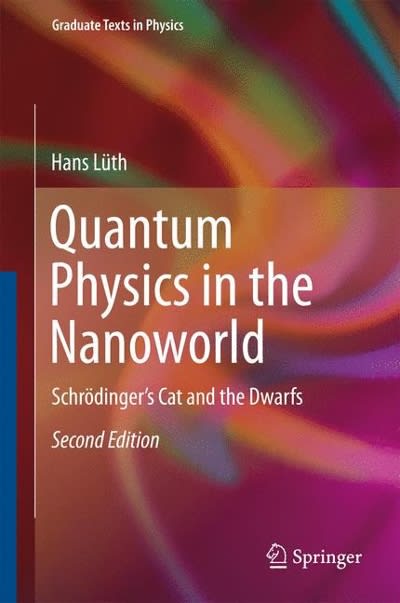Question
This first half of the course has focused on classical mechanics -- the motions of everyday objects and the ideas of force, energy, momentum, and
This first half of the course has focused on "classical" mechanics -- the motions of everyday objects and the ideas of force, energy, momentum, and angular momentum. Our understanding of these comes in large part not from observations of things here on Earth, but from studying the motions of objects in our solar system as they orbit the Sun and interact with one another through gravity.Galileo's observation of Jupiter's "moons" were an inspiration to the development of universal laws of motion and gravity that could describe not only effects here on Earth, but throughout the universe as well. This question while help you to review the basic ideas we have covered so far.
Jupiter's satellite Europa is an icy world that we will explore for signs of life. It orbits the planet on a nearly circular path with a radius of 670,900 km and completes its orbit every 3.55 Earth days.
1. Use Newton's universal law of gravitation and the properties of Europa's orbit to find the mass of Jupiter. (Hint: the period of the orbit is determined by the mass of the planet.)
2. Knowing Jupiter's mass from this calculation, its radius of 71,492 km across its equator, and that it rotates once around in 9.925 hours, what is the angular momentum from its spin on its axis? Because it spins so rapidly, Jupiter is deformed to have an oblate shape, with a smaller 66,854 polar radius. For this assume it is a sphere.
3. Jupiter orbits the Sun on the average (it has an elliptical orbit with an eccentricity of 0.05) at 7.8108 km from the Sun in 11.86 years. What is its angular momentum from this orbital motion?
4. Use Jupiter's orbit around the Sun and Newton's law of gravity to find the mass of the Sun (just as you used Europa to find Jupiter's mass).
5. The Sun is an almost perfect sphere with a radius of 695,700 km and it spins on its axis in the same sense of rotation that Jupiter and the other planets have in their orbits about it. It completes a rotation every 25 days. What is the spin angular momentum of the Sun? The Sun and Jupiter are responsible for most of the angular momentum in the solar system. Which has the most?
Step by Step Solution
There are 3 Steps involved in it
Step: 1

Get Instant Access to Expert-Tailored Solutions
See step-by-step solutions with expert insights and AI powered tools for academic success
Step: 2

Step: 3

Ace Your Homework with AI
Get the answers you need in no time with our AI-driven, step-by-step assistance
Get Started


